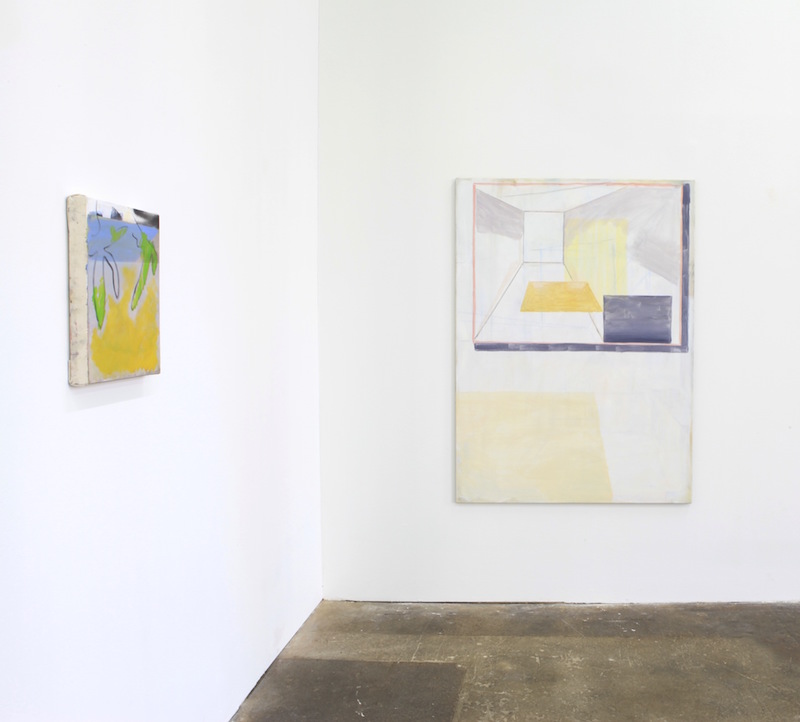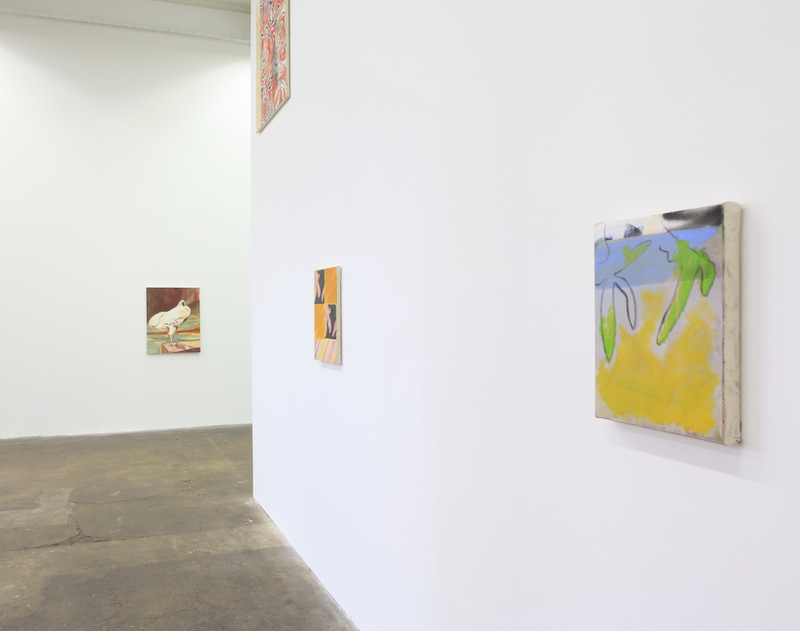
Curated by Anna-Lena Werner
10.01-28.02.2015
ARCHIV MASSIV, Baumwollspinnerei, Leipzig
“Form is what happens. It’s the fact of things in the world, however they are.” is a little known quote from the American poet Robert Creeley. With this statement he extended his prior principle “Form is never more than an extension of content”, which his older colleague Charles Olson used in 1950 in a manifest for the ‘Projective Verse’ – an open-form lyric. They demanded a separation of postmodern poetry from its static tradition and encouraged abstract tendencies, which had already begun in fine arts. Creeley’s proposition applied to the freedom of artistic expression and its diversity. Yet, despite its early empowerment, the form remains a condition of artistic production, be it a form of formlessness. Also contemporary painting – another medium that is preceded by a dictate of forms – is confronted with the question of what could be considered a painterly form today and which parameters determine its motifs.
The exhibition ‘Form is What Happens’ at Archiv Massiv in the Baumwollspinnerei Leipzig introduces the three young artists Tobias Buckel, Rasmus Nilausen and Jon Pilkington, whose works each question the self-concept of painting and similarly integrate the medium’s historical references. Despite the differences in their form-vocabulary, each of their works explores the relation between form and content: Does the content assign the form or is it the other way around? What controls the act of composition?
Buckel, Nilausen and Pilkington scrutinise the role of the motif to such an extent it is dramatically simplified, in some cases rejected or blended with the form. Neither material, nor style have a continuous, aesthetic scheme: While Pilkington and Buckel accept painterly overlaps or hardly recognisable layers in the backgrounds of their work and thus accent the pondering, the progress, the failure in their artistic practice, Nilausen looks for perfection in the completed picture and traces the myth of Art History and of the masterpiece. His palette is manifold; the formats are usually small. Image and text quotes of pop culture and the academic art world are integrated both humorously and critically in his works, often leading to absurdity.
Buckel instead focuses on an abstract architectural language, in which he creates geometric flat and deep image areas. His paintings hardly incorporate playful elements, as they are dominated by stern shapes. Reduction suggests directness and clarity. His works rather play with the alternation of small and large formats, where the frames appear like an extension of the composition. Reduction is also relevant for Pilktington’s works: he often spares areas and withdraws forms, while partially allowing the material to grow out of the canvas, provoking a transgression of the accustomed, two-dimensional motif into a wall-object. He explores surfaces and patterns, incorporating strong colours, as to create his compositions with rough forms, stains or scuffs.


































